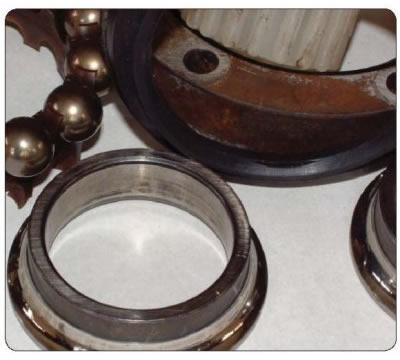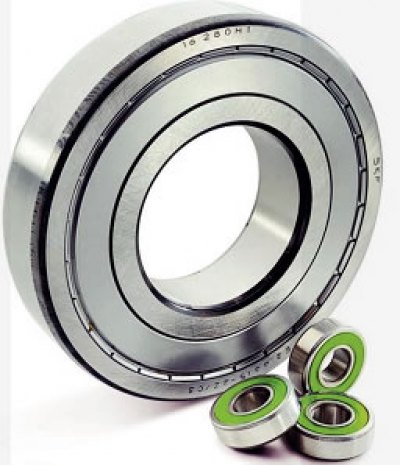
Modern bearings are designed for a long service life. For example, under ideal operating conditions, the resource of wheel hub bearings for passenger cars is 200-300 thousand km, for commercial vehicles - about 1 million km. In addition to product defects, premature failure of bearings occurs, as a rule, due to improper installation, damage, deviations of mating elements and assemblies, and violations of operating rules.
When a bearing is severely damaged or even destroyed, it is impossible to determine the cause of premature failure in most cases. It is important to diagnose at the slightest sign of a malfunction. Timely dismantling of the bearing and correct diagnostics can significantly reduce repair costs.
In addition to diagnosing faults in bearings, associated components and systems, installation rules must be carefully followed. All surfaces must be free of dirt and corrosion, free of scratches, wear of mating parts must be within tolerance. In particular, before installing the hub bearing, it is necessary to check the condition of the steering knuckle and the runout of the brake disc.
When installing bearings, it is extremely important to maintain the correct tightening torque. Fasteners must be new, torque wrenches must be calibrated at least once a year. A force deviation of only 1 Nm from the required parameters reduces the bearing life by about 1000 km! Tightening of threaded connections must be carried out in several stages in accordance with the instructions. When installing the bearing, rotate the hub, this is true for all types of bearings, but it is especially critical for tapered bearings, since this is the only way to ensure optimal clearance and proper installation.
Nowadays, ball bearings are more commonly used. Their advantage is that they do not block even with critical wear. However, they also have a drawback - a limited load capacity. When replacing a bearing, it is important to follow the manufacturer's recommendations and not install the part if the original packaging is badly damaged. It does not make sense to check the gap of the part manually before installation - after installation this value will change. If necessary, the gap and vibration can be checked on a special stand under load.
It is not recommended to rotate the pump bearings before installation: they should only work with coolant. When installing a new pump, be sure to flush the system and completely replace the coolant. However, not everything is so simple here, since automakers have recently often changed the composition of antifreezes. If it is not known what type of antifreeze was previously poured into the coolant system, flushing with distilled water is recommended.
It is even better in such cases to make a double replacement of the coolant, that is, after replacing the pump, fill in new antifreeze, drive on it for a while and then replace it again.
In conclusion, here are some of the most common reasons why a bearing can fail prematurely:
1. Fatigue failure, surface and subsurface.
2. Wear, abrasive and adhesive. Abrasive occurs as a result of the ingress of foreign bodies (e.g. dirt particles), adhesive - against improper loading and slippage.
3. Corrosion, chemical and friction. Chemical corrosion - rust - can occur as a result of seal failure, improper bearing installation. In turn, frictional corrosion can be of several types. One of them, the so-called fretting corrosion, occurs as a result of microvibrations and oxidation of wear products on the surface of the part. Another type of frictional corrosion is false brinelling. Such a defect manifests itself in the form of potholes on the raceways, most often when exposed to vibration acting on the bearing at rest, for example, when transporting a car on a railway platform.
4. Erosion due to current or voltage. In case of current damage due to local overheating, stripes appear along the perimeter of the ring and rolling elements. When subjected to stress, craters can form on the metal. Such a defect may be due to improper grounding of the welding equipment, for example, when carrying out body repairs. The likelihood of such damage is higher in electric motors and electric vehicles, so bearings with a special dielectric coating are used there.
As you can see, there are quite a few possible causes of premature bearing failure, and, as a rule, they are not related to the design of the part itself. If you do not eliminate the malfunctions of the car in the complex, it is impossible to achieve the correct operation of a particular unit, which is why careful diagnostics are required when performing repair work.
Wheel bearing failures
External manifestation of the malfunction/breakdown/problem: Damage to the raceway.
Probable Cause: Impact on the inner ring during bearing mounting.
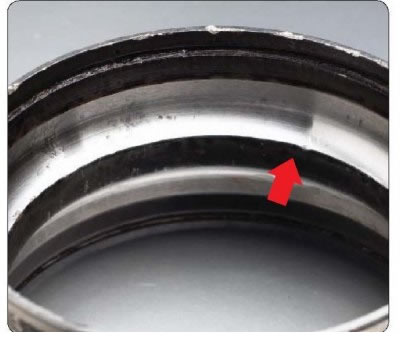
External manifestation of the malfunction/breakdown/problem: Damage to the raceway.
Probable Cause: Incorrect torque selection when installing the bearing, resulting in too little clearance, causing damage to the raceway.
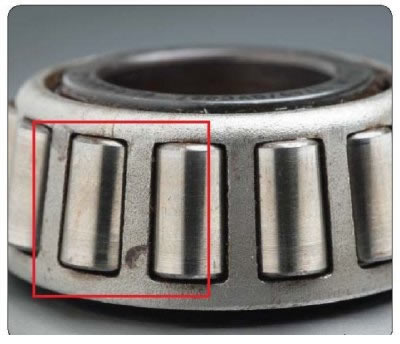
External manifestation of the malfunction/breakdown/problem: Damage to the raceway.
Probable Cause: Foreign body in the bearing.
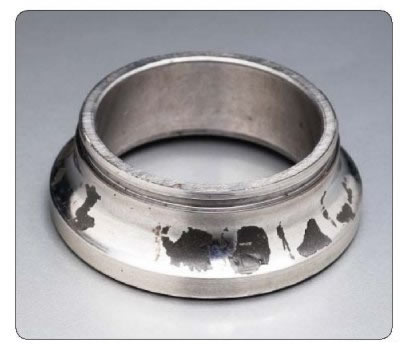
External manifestation of a malfunction / breakdown / problem: Darkening of the surface of the outer ring of the bearing.
Probable cause: Incorrect installation of the bearing in the knuckle, which led to fretting corrosion of the outer ring surface and its darkening. For knots of this type, LGAF 3 anti-fretting paste should be used.
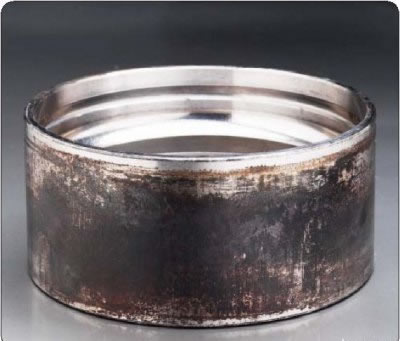
External manifestation of the malfunction/breakdown/problem: Damage to the raceway.
Probable Cause: A foreign body has entered the bearing causing wear and subsequent chipping of the ring surface.
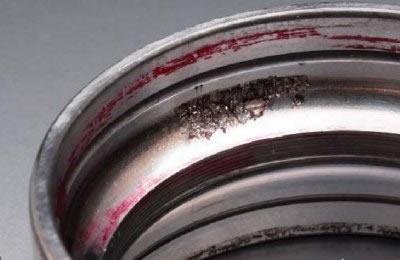
External manifestation of a malfunction / breakdown / problem: Breakage, chipping of the outer ring.
Probable Cause: Impact on housing/outer ring during bearing installation.
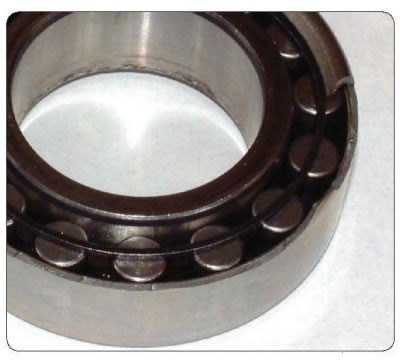
External manifestation of a malfunction / breakdown / problem: Water ingress.
Probable Cause: Water intrusion through the seal causing corrosion on the inner surface of the outer ring.
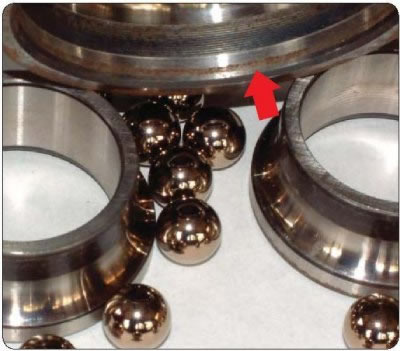
External manifestation of the malfunction/breakdown/problem: Peeling of the surface of the raceway.
Probable Cause: Improper mounting technique: Inappropriate mounting force causing excessive preload in the bearing.
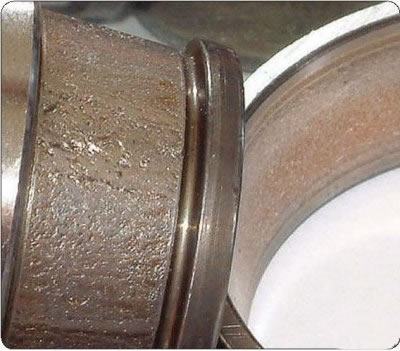
External manifestation of malfunction / breakdown / problem: Dents on the seal.
Likely Cause: Seal failure is most likely caused by impact during bearing mounting.
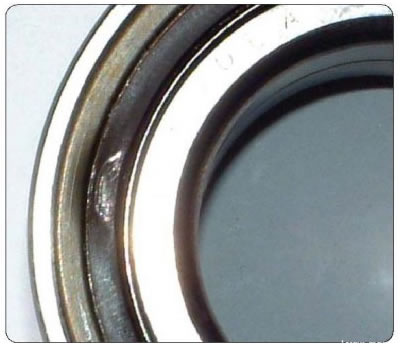
External manifestation of the malfunction/breakdown/problem: Peeling of the surface of the raceway.
Probable cause: Misalignment during bearing installation caused damage to the raceway that progressed to the stage of surface flaking.
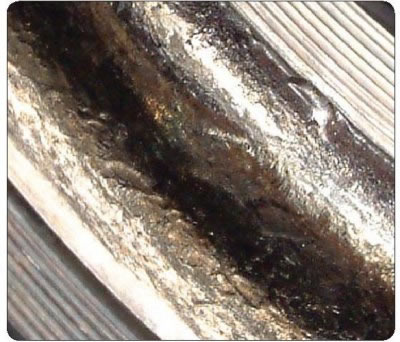
Outward manifestation of malfunction/breakdown/problem: Displaced seal.
Probable Cause: Impact on the bearing during mounting has damaged the edges of the inner ring, the raceway surface and the seal has been dislodged from its original position.
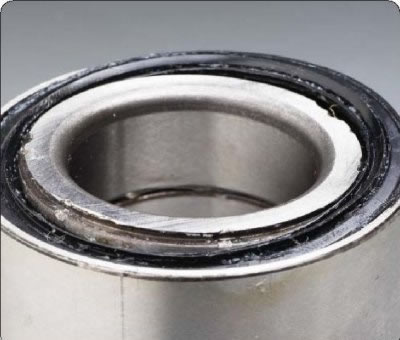
External manifestation of a malfunction / breakdown / problem: Plastic deformation of the track surface.
Probable Cause: Plastic deformation occurs when loads exceed the ultimate strength of the material. Static or shock overloads cause plastic deformations with the formation of dents on the surfaces of the bearing raceways located in accordance with the pitch of the rolling elements.
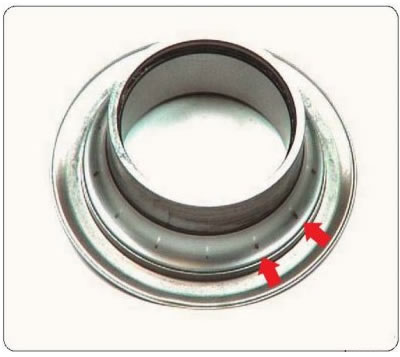
External manifestation of a malfunction/breakdown/problem: Increased in width trace of a characteristic color on the path from the rolling elements towards the shoulder.
Probable cause: During operation, the clearance in the bearing increases, which causes a significant change in the width of the track on the track from the rolling elements.
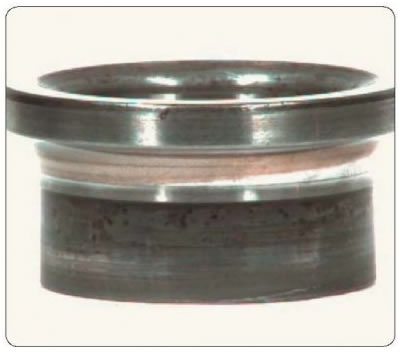
External manifestation of a malfunction / breakdown / problem: Plastic deformation of the surface of the inner ring.
Probable Cause: This type of deformation on the raceway indicates increased shaft vibration.
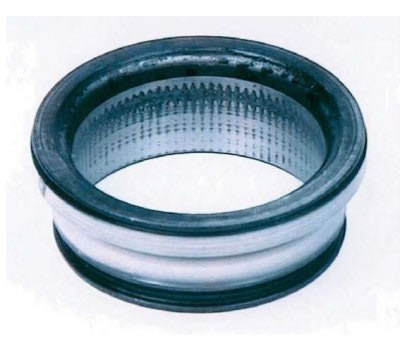
Outward manifestation of malfunction/breakdown/problem: Seal failure.
Probable cause: Violation of installation technology, most likely impact on the bearing during installation.
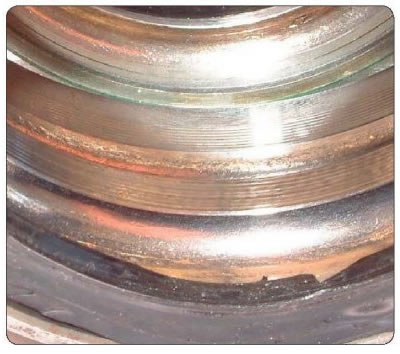
Outward manifestation of malfunction/breakdown/problem: Seal failure.
Probable Cause: The damage is most likely caused by misalignment of the bearing mounting, which caused the seal to come into contact with the threaded part of the shaft.
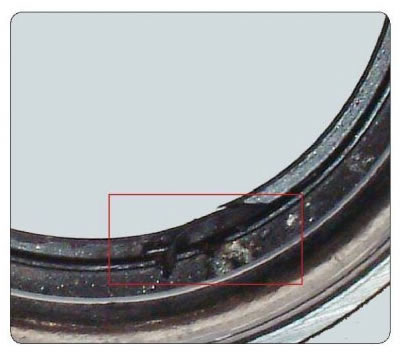
External manifestation of a malfunction / breakdown / problem: Surface chipping.
Probable Cause: Misalignment during bearing installation causing chipping of raceway and outer ring surfaces.
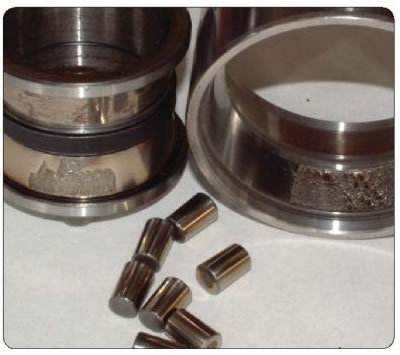
External manifestation of a malfunction / breakdown / problem: Water ingress / rust.
Probable cause: Damage to the seal, most likely due to non-compliance with the technology during installation.
